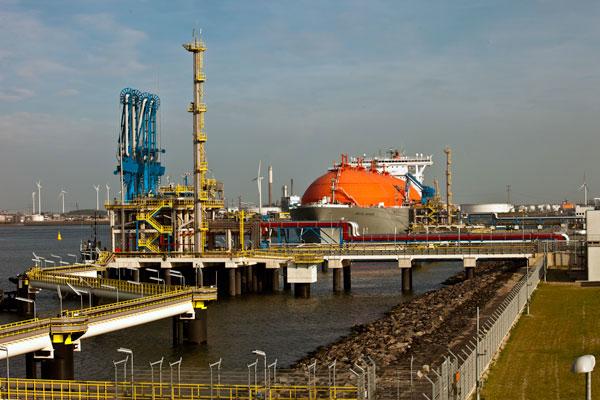
EUROPE: WHERE IS LNG?

There was no clear answer to the question of where LNG for Europe might come from in a session devoted to the topic at the European Gas Conference in Vienna, Austria, but that didn't mean that panel participants were unable to provide a wealth of information and insights to the discussion.
In his attempt to address the query, Danila Bochkarev, PhD Senior Fellow, EastWest Institute said that besides the LNG project in Sakkhalin, Russia has its designs elsewhere. "Not only is Russia a latecomer, it is mostly focused on Asia."
However, he offered that gas export within Russia has been partially liberalized for LNG. "That concerns two companies: Rosneft and Novatek. The question remains whether that means the LNG would really go to Europe," he said.
Regarding Novatek's project in Siberia, Mr. Bochkarev commented: "The economics of it was originally focused on Asian markets, but the delivery might be an issue. Considering the ice situation in the winter, it might be easier to go West." The sanctions against Russia also remain a concern, according to him.
"The project is quite sound – it has good tax breaks, recently received support and looks to be completed on time," he noted, adding that Sakkhalin II remains questionable.
Ignacio de Aguirre, Manager for Strategy and Energy Economics, Gas Natural Fenosa, said it was likely there would not be demand in Europe, "Because we have great doubts on domestic, industrial and power demand and because of climate and energy policy from the EU - 20/20/20 – and new goals for 2030/50. All of this is not very positive for gas."
He pointed out that many gas contracts that had been signed in the 1960s will be up for expiry in the near future. One source of volatility he said is gas from the power sector, in light of renewables.
"So we need more flexible supply for a demand that's not that firm – US LNG makes a great fit for that," offered Mr. de Aguirre.
Andrew Walker, VP Global LNG, BG Group, noted that Europe is a balancing market for the global LNG market, that volumes tend to ebb and flow depending on global demand and regulated demand in Europe. "So, actually where will volumes come from has become harder to determine as the global model has evolved; it used to be we had a fairly simple model for Europe: we knew that what was contracted to Europe didn't come because people were diverting it," he explained.
However, according to Mr. Walker, this depends on the region: LNG is divertible in Northern Europe, and the inflexibility of markets in the South meant the LNG typically ends up there. "The model continues to evolve – some of the LNG that was coming to Europe is gone; some that's flexible comes but doesn't stay – it reloads and goes," he said.
Portfolio players like BG or Natural Gas Fenosa, he explained, became intermediaries that balanced their portfolios with these deliveries. This all adds up to making it very difficult to say which volumes of LNG will go from where to where.
Session moderator David Ledesma, Independent Gas & LNG Consultant, offered that 10-20 million tons of LNG is set to come online in the next few years up to 2020. In light of that, he asked what panel members thought of how flexible Asian demand is.
Danila Bochkarev said Pakistan provides a very interesting case study, as it had a very developed infrastructure and production like Russia, so it had switched to fuel oil during high prices.
"When the prices go back up, you see it as a new market for LNG," he explained. "They can come and say, 'the infrastructure is already in place.'"
Mr. de Aguirre countered that it is not always about price. "We are risk managers: we buy, then we have to manage."
David Ledesma pointed out that, just like in Europe, countries like Pakistan need support from the government to initiate new LNG infrastructure. He went on to ask how panel participants think producers will react to current market conditions.
Andrew Walker replied: "Where we see any impacts of current uncertainties/low oil price on the supply side, I think it's almost inevitable there must be a feedback that goes into the supply side. We're a long-lead industry so I'd suspect you' want to see a big impact on the existing capacity; you may see some kind of targeted maintenance by people who think they can shift that slightly, but it's a big question in my mind.
"For an industry that's made FID for about 25 million tons in the last 4-5 years, how much do you think we'll see next year? Twenty-five, more than 25, or a lot less than 25?" asked Mr. Ledesma.
Mr. Walker said that the industry had found itself in this situation before, seeing a hiatus of projects in 2006-08.
"If investments go down over the next few years, are we starting to see the shaping of the curve in the 2020 timeframe where we all do our nice linear extrapolations, forget we're kind of cyclical? I do wonder whether we'll see that," concluded Mr. Walker, who said he remained hopeful.
naturalgaseurope.com




